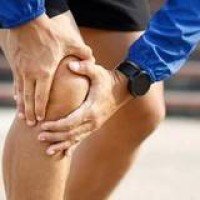According to the 2017 health statistics report published by the Department of Health, over 41,000 patients were hospitalized for various types of bone fractures in Hong Kong during the year, and about 90 of them died from this medical condition.
What is a bone fracture?
A bone fracture is when a bone breaks or changes its shape due to excessive external forces that exceed the bone's ability to withstand them. Other causes such as accumulated stress, osteoporosis, etc., can also cause a bone to break. Fractures vary significantly depending on the age of the injured person. For example, elderlies are more likely to experience broken bones due to osteoporosis, while children tend to experience greenstick fractures or growth plate fractures as their bones are softer and easier to bend since they are still in their development phase.
| Greenstick fracture | The bone bends and cracks, instead of breaking into separate pieces. This medical situation is named greenstick fracture as the bone behaves like a fresh green twig when it is being bent. |
|
Growth plate fracture |
This refers to the bone growth that begins at the end of a long bone. As this medical condition could hinder future bone growth, it must be treated with care. |
Causes of bone fractures
There are many causes of bone fractures, and they can generally be categorized into the following types.
| External forces | This is the most common cause of fractures. Bone breaks when the direct external forces it receives exceeds its ability to withstand them. |
|
Indirect forces |
This is common in cases where a patient falls from a height and lands on both feet, resulting in a compression fracture of the spine due to the pressure caused by forces. |
|
Muscle contraction |
When muscles contract strongly, bones can break. Rib fractures caused by violent coughing is an example. |
|
Fatigue fracture |
This refers to fatigue-induced bone fractures caused by mild, repeated stress over time. |
|
Pathological fracture |
It is not caused by external forces, but by pathological conditions of the patient, such as cancer cells spreading to the bones (bone metastases), incomplete growth of bones that is congenital, etc. |
Types of fractures
A fracture occurs when a bone breaks due to external force or pressure, disrupting its structural integrity. Based on the severity and pattern of damage, fractures can be classified into various types.
| Closed Fracture | Although the bone is broken, it has not pierced the skin. This is a common and relatively stable type of fracture. |
|
Open Fracture |
The bone pierces through the skin, or the wound reaches the bone surface, increasing the risk of infection and requiring immediate medical treatment. |
|
Compression Fracture |
Common in the spine, this type of fracture occurs when the bone collapses due to pressure. It is more frequently seen in older adults or individuals with osteoporosis. |
|
Comminuted Fracture |
The bone breaks into three or more pieces, usually occurring in severe trauma or high-impact accidents. |
|
Spiral Fracture |
Caused by twisting force, the fracture line forms a spiral shape and is commonly seen in limb sports injuries. |
|
Oblique Fracture |
The fracture line is angled, making bone fragments less stable. Treatment may require immobilization or surgery. |
|
Greenstick Fracture |
Common in children, the bone partially fractures but does not completely break due to its greater flexibility. |
|
Stress Fracture |
Prolonged repetitive use causes tiny bone fractures, commonly seen in athletes or individuals who engage in excessive physical activity. |
Different types of fractures require different treatment approaches. If a fracture is suspected, it is recommended to seek medical attention as soon as possible for diagnosis and treatment.
Most Common Upper Limb Fractures
Upper limb fractures are among the most frequently occurring bone injuries in daily life, especially after falls, sports activities, or traffic accidents.
Clavicle Fracture (Broken Collarbone)
Most commonly caused by falling onto an outstretched hand or direct impact to the shoulder, this type of fracture is frequently seen in children and adolescents. Patients experience severe shoulder pain and difficulty lifting their arm.
Distal Radius Fracture (Wrist Fracture)
Usually caused by falling onto an outstretched hand, this type of fracture is common among older adults or individuals with osteoporosis. Typical symptoms include wrist swelling, deformity, and difficulty in movement.
Proximal Humerus Fracture (Upper Arm Fracture)
Occurs near the shoulder in the upper arm, often resulting from falls from heights or direct impact. This type of fracture can affect shoulder mobility and the ability to lift the arm.
Phalangeal or Metacarpal Fracture (Finger/Hand Fracture)
Often caused by impact, crushing, or twisting injuries, this type of fracture leads to noticeable finger deformity, swelling, and pain, affecting fine motor skills of the hand.
Elbow Fracture
Includes fractures of the ulna and radius near the elbow joint, often caused by falls or strong impacts. Symptoms may include swelling, restricted movement, or deformity in the elbow.
Fractures Across Different Age Groups
Children and Adolescents
Common fractures in children and adolescents include forearm fractures (such as the radius and ulna), clavicle fractures, and growth plate fractures. Since bones at this age are still soft and flexible, fractures often occur as "greenstick fractures," where the bone bends but does not completely break. In terms of recovery, children's bones heal relatively quickly. However, if the fracture involves the growth plate, careful monitoring is needed to prevent potential effects on future bone development.
Adults
Common types of fractures in adults include wrist, ankle, finger, shoulder, and hip fractures, often caused by sports injuries, traffic accidents, or falls from heights. At this age, bone density remains relatively strong, so the location and severity of fractures can vary significantly. Recovery depends on the fracture site and treatment method, such as cast immobilization, metal plate implantation, or surgery. Rehabilitation therapy is crucial to restoring mobility and function.
Elderly (65 Years and Older)
Common fractures in the elderly include hip fractures, vertebral compression fractures, and wrist fractures. Due to the prevalence of osteoporosis in this age group, falls can easily lead to severe fractures, impacting mobility and daily self-care. Recovery tends to be slower and requires a combination of physical therapy, nutritional supplementation, and improvements in home safety to prevent further falls and support functional recovery.
Symptoms of bone fractures + Risk factors
Patients will have different symptoms depending on the severity of their bone fractures. The most common ones are swelling, bruising or deformation of the fracture site, and this often leads to pain. However, if the fracture is severe, it may cause internal bleeding or the following symptoms:
- Paleness
- Chills
- Nausea
- Mild headache
- Fever or faintness
Risk factors for bone fractures
- Elderlies
- Postmenopausal women
- People with chronic illnesses
- Osteoporosis patients
- Athletes
How is a bone fracture diagnosed? + Treatment for bone fractures
Fractures can generally be diagnosed by X-ray, but in cases of complex or comminuted fractures, patients may need a CT scan.
Treatment for bone fractures
Bone fracture treatments aim to set the broken bone back to its original position. Doctors will choose the most appropriate treatment based on the location of the patient’s bone fracture and its severity. If it is a simple fracture, a plaster cast will be used to immobilize the broken bone. However, if the fracture cannot be treated with reduction, surgery may be required to stabilize the bone with nails or plates.
| Closed reduction | Bone pieces are moved back into their correct position manually, which allows them to heal in 6-8 weeks. |
|
Open reduction |
If closed reduction is not suitable for the patient, open reduction, which refers to the use of surgery, will be performed to rearrange the alignment of the broken bones. During the process, the fractures will be stabilized with nails or plates. Patients may require physiotherapy after the surgery to help with the recovery of mobility. |
Bone Fracture Healing Time and Rehabilitation Precautions
Bone Fracture Healing Time
The healing time of a fracture varies depending on age, fracture location, severity, and overall health condition. Generally:
- Children heal faster, usually within 3 to 6 weeks;
- Adults typically take around 6 to 8 weeks;
- Elderly individuals or those with chronic illnesses may require 10 weeks or more for recovery.
During the healing period, it is essential to follow medical advice for proper immobilization (such as a cast or brace) and attend regular follow-up checkups. Additionally, physical therapy plays a crucial role in rehabilitation, helping restore joint mobility and muscle strength while preventing long-term stiffness or loss of function.
Rehabilitation Precautions
- Avoid excessive weight-bearing or intense exercise too soon to prevent healing disruptions;
- Maintain a balanced diet with sufficient calcium, protein, and vitamin D to support bone regeneration;
- Perform physical therapy progressively, adjusting intensity according to recovery progress;
- Prevent falls, especially for elderly individuals, by improving home safety with non-slip mats and handrails.
Bone Fracture Care: Recovery Diet and Nutritional Supplements
During the bone fracture recovery process, in addition to proper immobilization and physical therapy, nutritional supplementation plays a crucial role in healing. The body requires sufficient nutrients to repair damaged bone tissue and enhance bone density. Key nutrients and their sources include:
- Calcium – The primary component of bones, essential for repair and strengthening. Good sources include milk, cheese, tofu, and dark green vegetables such as kale and spinach.
- Vitamin D – Enhances calcium absorption. Sunlight is the best natural source, but it can also be obtained from salmon, egg yolks, and vitamin D-fortified milk.
- Protein – Supports tissue repair and wound healing. Recommended sources include fish, eggs, legumes, and lean meats.
- Vitamin C – Boosts immunity and promotes collagen synthesis, aiding fracture healing. Good sources include kiwis, oranges, and strawberries.
- Zinc and Magnesium – Assist in bone metabolism and regeneration, found in nuts, whole grains, and seafood.
FAQ
Is a Cast Necessary for a Bone Fracture?
This depends on the location and severity of the fracture. Some minor fractures may not require a cast and can be managed with a brace, bandaging, and limited movement. However, if the fracture is in a highly mobile area or carries a risk of displacement, doctors typically recommend casting for stabilization and optimal healing. The decision to use a cast should be based on X-ray or imaging results, with a doctor providing professional assessment and guidance.
Common Issues After a Bone Fracture
Bone fractures can lead to several complications, including pain, swelling, bruising, and restricted movement. In more severe cases or after surgery, recovery may involve joint stiffness, muscle atrophy, or reduced mobility. Additionally, prolonged immobility may result in poor blood circulation or deep vein thrombosis. Some individuals may also experience psychological effects such as anxiety or depression, especially if the injury impacts daily activities or independence. Beyond physical therapy, mental health and emotional well-being should also be considered during recovery to ensure a holistic approach to healing.
Is Rehabilitation Necessary After a Fracture? When Can It Begin?
Rehabilitation is essential in most cases, especially for fractures near joints or those affecting mobility. It helps restore range of motion, muscle strength, balance, and coordination, ultimately speeding up recovery and preventing long-term complications. The timing for starting rehabilitation depends on the fracture location and severity. Generally, it begins once the bone has started healing and a doctor confirms it is safe—this could range from a few days to several weeks. Initially, light stretching is recommended, followed by progressively increasing movement and weight-bearing exercises. For best results, rehabilitation should be guided by a professional physical therapist to ensure a safe and effective recovery.























